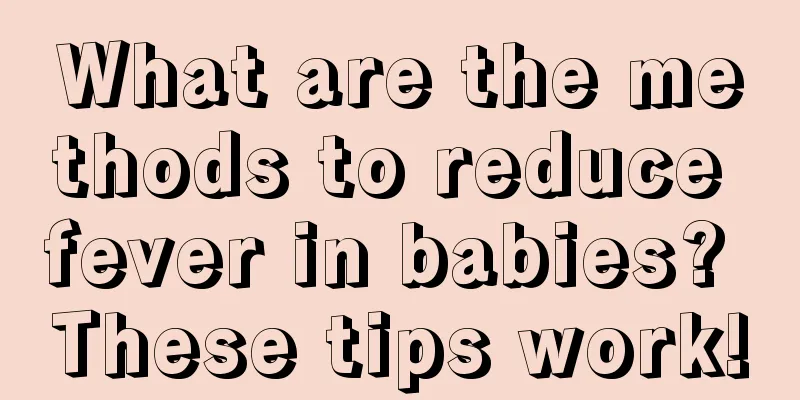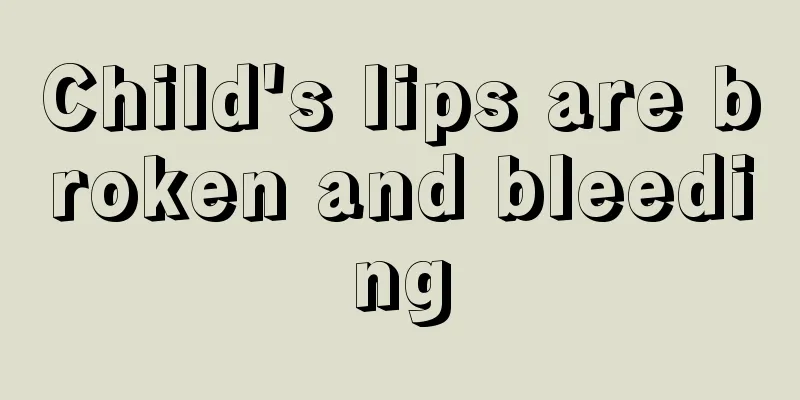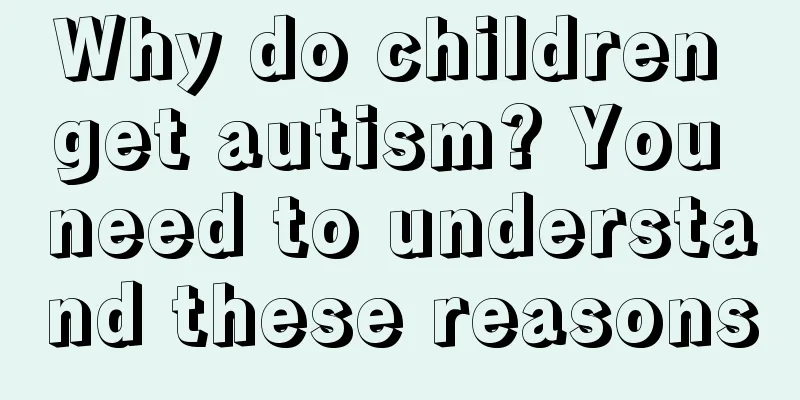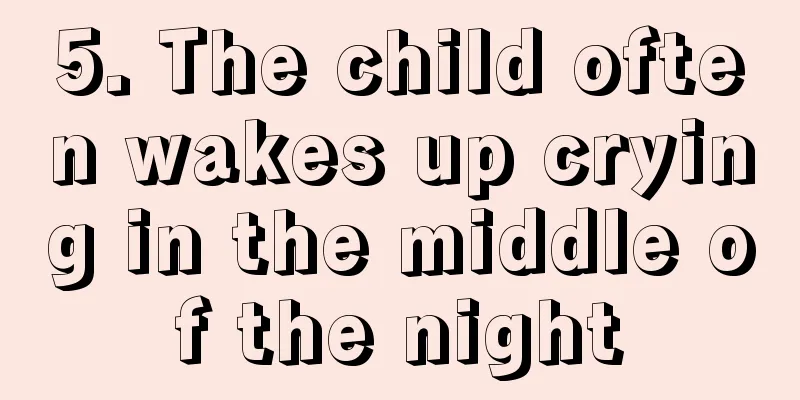What are the methods to reduce fever in babies? These tips work!

|
The functions of various systems in the baby's body are very fragile, so once the baby has a fever, parents must be highly vigilant, because prolonged fever is extremely harmful to the baby and may cause irreversible damage. Therefore, parents must master some effective methods to reduce the baby's fever, such as the following methods are simple and effective. 1. 35% alcohol bath Alcohol can dilate blood vessels and take away a lot of heat when it evaporates, which can help cool down infants and young children when they have a fever. Prepare 100 ml of 75% alcohol, add an equal amount of warm water, and keep the temperature at around 27-37 degrees Celsius. Do not let it be too cold, otherwise it will cause muscle contraction, causing the temperature to rise again. When doing alcohol bath, use a small towel to start wiping the baby's neck, then wipe from top to bottom in a patting manner. The armpits, groin, and areas with large arteries and blood vessels on the surface of the body should be wiped until the skin turns slightly red, which will help reduce the temperature. Be careful not to rub the baby's chest, abdomen, and soles of the feet to avoid causing adverse reactions. 2. Take a warm bath Taking a bath can help dissipate heat. If your baby is in good spirits when he has a fever, you can give him more baths and adjust the water temperature between 27 and 37 degrees Celsius. Be careful not to give your baby a hot bath, otherwise it will easily cause vasodilation throughout the body, increase oxygen consumption, easily lead to ischemia and hypoxia, and aggravate the condition. 3. Soak your feet in hot water Soaking your feet can promote blood circulation and relieve discomfort. Another benefit of soaking your baby's feet when he has a fever is that it can help reduce the temperature. You can use a large basin or a small bucket for foot soaking. Pour 2/3 of the basin with water. The water temperature should be slightly higher than usual, around 40 degrees Celsius, and it should be based on what the baby can adapt to. When soaking the baby's feet, the mother can rub the baby's two little feet, which can not only dilate the blood vessels but also relieve the discomfort caused by fever. 4. Use ice packs You can go to the store to buy chemical ice packs, put them in the refrigerator when using, take them out after they turn from gel to solid, wrap them in a towel and apply them to the top of the baby's head, forehead, neck, armpits, groin, etc., and they can be used repeatedly. You can also make your own ice packs at home: fill a disposable medical silicone glove with water, tie a knot, and place it in the freezer. Freeze it into a solid state before using. If you feel the ice is too cold, you can take out the ice bag when it is half ice and half water, wrap it in a towel and apply cold compress to your baby. 5. Ice pillow When your baby has a high fever, you can make an ice pillow for him to use as a pillow, which is both comfortable and effective. Go to the hospital and buy an ice pack (not a hot water bottle). Pour the ice into a basin, break it into small pieces, rinse off the edges with water, put them into an ice bag, add 50 to 100 ml of water (do not fill it up, 2/3 full will be enough), expel the air, clamp the bag, wrap it with cloth or towel and place it under the baby's head and neck as a pillow. When the ice cubes melt, you can replace them and the baby's body temperature will drop soon. For antipyretic drugs, acetaminophen (Bifurin, Tylenol, etc.) and ibuprofen (Moritrin, etc.) are the two most widely used drugs by pediatricians and have the highest clinical safety. Although these two types of antipyretic drugs are of two different types, they both have the function of relieving fever and relieving pain. When taking the medicine, you need to pay attention to the difference in dosage forms: acetaminophen products such as Benadryl and Tylenol have three dosage forms: drops, oral solution, and chewable tablets; ibuprofen products such as Motrin only have two dosage forms for children: drops and oral solution. For infants under 1 year old, it is best to use drops because the drug concentration in drops is low and the irritation is less. The dosage of drops should be selected according to body weight. Generally, for infants aged 6 to 11 months, with a corresponding weight of 5.5 to 8 kg, use 1 dropper of antipyretic medicine. Babies aged 12 to 23 months, weighing about 8.1 to 12 kg, can take 1.5 droppers. For children over 2 years old, it is best to take oral liquid antipyretics. For older children, tablets can be used. These fruit-flavored chewable tablets look like biscuits and children will not refuse to take them. In addition, antipyretics such as aspirin and paracetamol are highly irritating and have side effects on children. Indomethacin (indomethacin)-type drugs are highly irritating to the stomach and are not recommended. During the medication process, parents should be careful not to let their children take a certain type of antipyretic drug for too long. If the fever lasts for more than two days, it is best to switch to another type of medicine. Tylenol and Benadryl should not be taken more than 4 times a day, with at least 4 hours between each dose. |
<<: What to do if baby has intestinal gas? Here are some ways to deal with it!
>>: How to treat diarrhea in children
Recommend
What should I do if my child hits his chin and has a protrusion on the bone?
Because children are naturally active, it is inev...
Is it good to give children an enema?
In fact, if the child can take medicine normally ...
Is keratitis contagious in children?
Keratitis is a relatively common ophthalmic disea...
What is the reason for white bumps on baby's gums?
White bumps will appear on the baby's gums be...
Why does my baby feel restless when sleeping during the day?
Babies like to sleep when they are young, and par...
How to whiten children's dark skin
Children are a carefree group, but there are some...
Why is the tongue coating thick on an eight-month-old baby?
The tongue coating refers to the surface of our t...
What is the cause of the child's knee cracking?
Children's knee cracking is mainly a joint pr...
Hypoglycemia convulsions in children
Many children are prone to symptoms of hypoglycem...
How to care for a two-month-old baby with shortness of breath
Some mothers will find that their two-month-old b...
Newborn baby does not sleep during the day for 20 days
We all know that most newborns sleep most of the ...
The child is one and a half years old and still can't walk
In the process of a child's growth and develo...
Blisters on child's skin
Blisters are also a type of herpes, with a lot of...
What is the reason for frequent urination in children?
If a child has frequent urination, the first thin...
At what age does a breastfed baby start to hold in the stomach?
After the baby is born, the baby's physical h...









